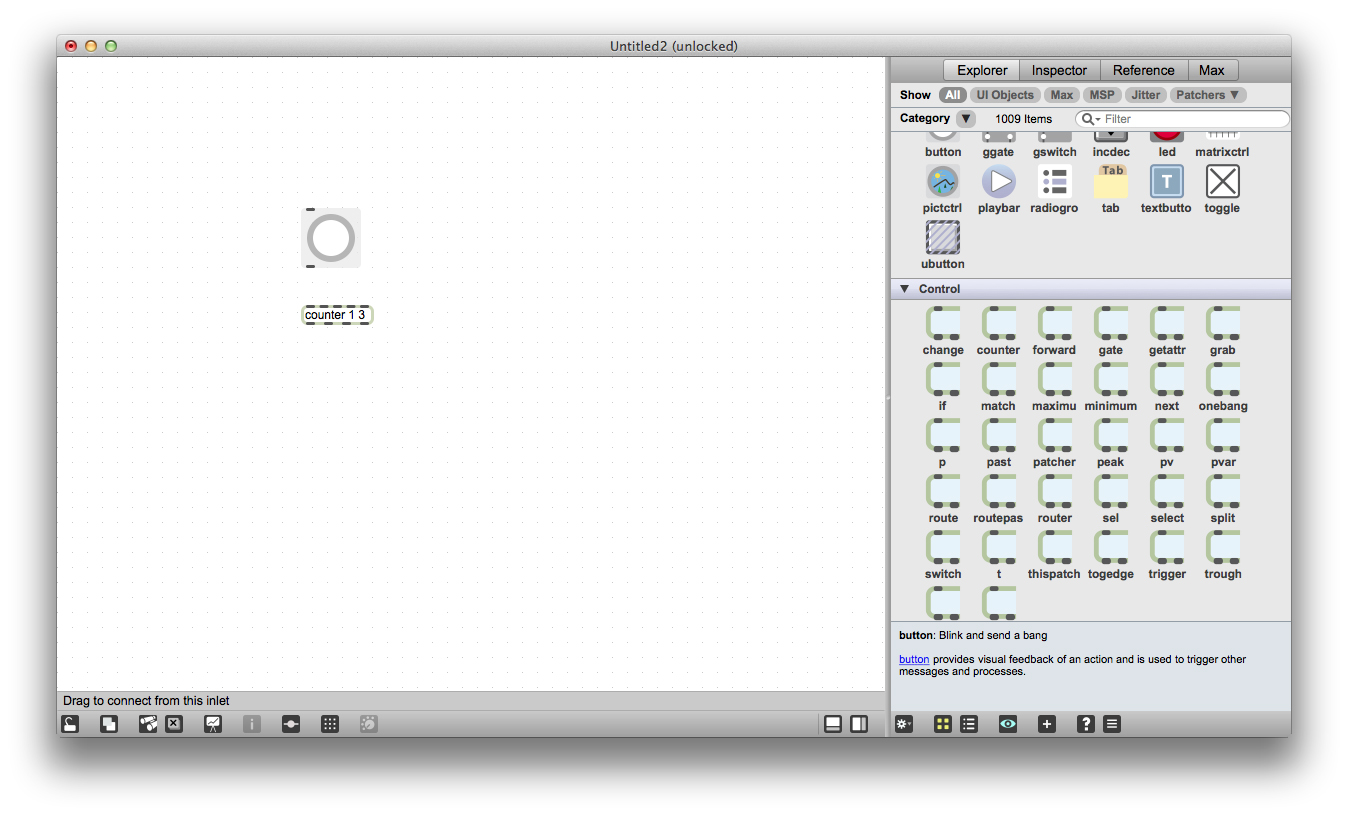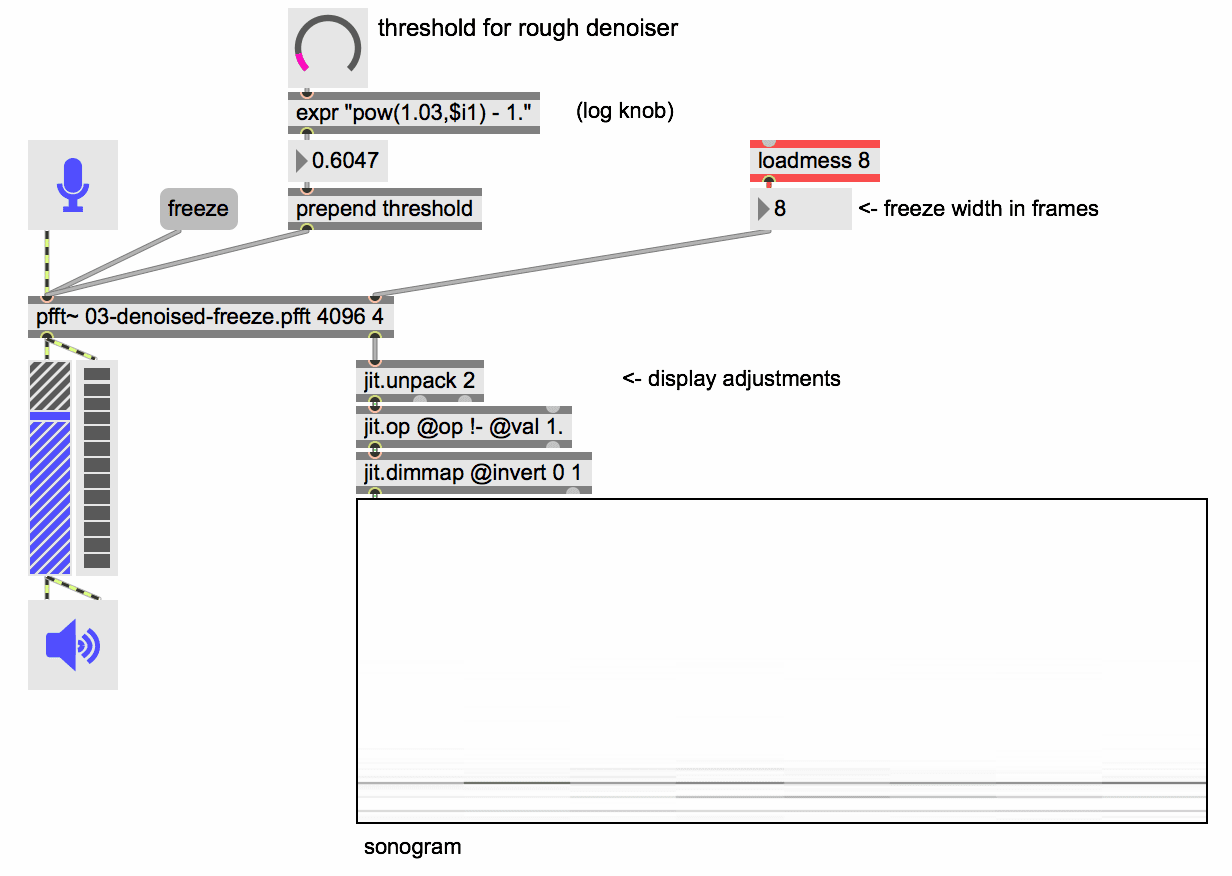

#Max msp patches software
Live, he takes total control, managing the software from his laptop completely by himself. It is true that Jonny takes the forefront, however. Though programming is generally associated only with Jonny, everyone in the band takes part in designing the patches used for particular tracks. Due to time constraints during the recording of that album, the band actually programmed the patches used in study, figuring them out as they went. Radiohead’s first major use of Max/MSP was on their sixth album, Hail To The Thief. My copy of Emagic Logic insists on looping the first four bars whenever it can (although it’s good software in lots of ways)… With Max/MSP I finally got to think about sound and MIDI, and their manipulation, in a much purer way… I felt that all direct contact with computers had been taken away from me, until I found Max/MSP.” - Jonny Greenwood However limitless sequencers, audioeditors, and plugins claim to be, you still find yourself being forced, however subtlely, to work in certain ways. List of Max objects, Messages, and attributes for specific Max objects, GlossaryĤ.5 Varying the duty cycle (pulse-width modulation)Ĥ.8 Control signals: multi-channel panningĤ.“I’ve always felt uncomfortable having to use other people’s software to make music. IB.9 Using arrays as envelopes: Shepard tone IB.5 Reducing a list to its parts: the iter object

IB.4 The relational operators and the select object Lista oggetti Max, Lista attributi ed etichette per oggetti Max specificiĪDDITIONAL ELEMENTS OF PROGRAMMING WITH MAX NOISE GENERATORS, FILTERS AND SUBTRACTIVE SYNTHESISģ.1 Sound sources for subtractive synthesisģ.2 Lowpass, highpass, bandpass, and bandreject filtersģ.4 Filter order and connection in seriesģ.7 Filters connected in parallel, and graphic equalizationģ.8 Other applications of connection in series: parametric eq and shelvingģ.9 Other sources for subtractive synthesis: impulses and resonant bodies List of Max objects, Messages, attributes, and parameters for specific Max objects, GlossaryĢ.3 Crossfading between wavetables: vector synthesisįundamental concepts, Glossary, Discography IA.11 Use of attributes inside the object box

IA.9 Sending sequences of bangs: the uzi object IA.8 The message box and variable arguments IA.1 Max and the numbers: the binary operators List of principal commands, List of Max objects, Messages, attributes, and parameters for some Max objects, Glossary 3 will include digital audio and sampled sounds, delay lines (echo, loops, flangers, chorus effects, phasers, pitch shifting, reverse, comb filters, allpass filters, Karplus-Strong algorithm), MIDI and realtime control, dynamic processors (compressors, expanders, gates, limiters), reverb and spatialization, Max for Live, non-linear synthesis (AM, RM, FM, PM, PD and non-linear distortion), granular synthesis and other topics.ġ.1 Sound synthesis and signal processingġ.3 Changing frequency and amplitude in time: envelopes and glissandiġ.4 The relationship between frequency and musical intervalġ.5 Introduction to working with sampled sound This book will provide a reader with skill and understanding in using Max/MSP for sound design and musical composition.

Comprehensive online support, running parallel to the explanations in the book, includes hundreds of sample patches, analyses, interactive sound-building exercises, and reverse engineering exercises. Structured for use in university courses, the book is an overview of the theory and practice of Max/MSP, with a glossary of terms and suggested tests that allow students to evaluate their progress. Fourth Edition updated for MAX 8 – More than 500 pages, interactive examples, hundreds of patches, online support, theory and Max/MSP glossary, test, reverse engineering exercises, analyses, completion and correction of patches, etc.Ĭhapter I – Introduction to Sound Synthesis and Signal Processing


 0 kommentar(er)
0 kommentar(er)
